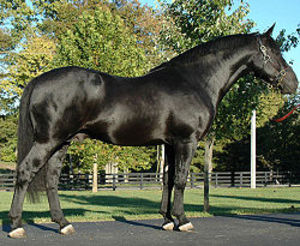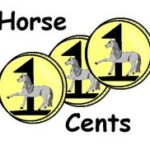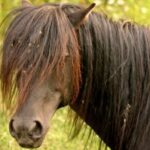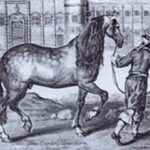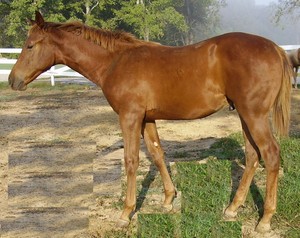The Irish Draught is a breed that makes you wonder why horse breeders don’t breed more of them and less of slimmer, more fragile breeds. Although called the Irish Draught (pronounced “draft”), they do not look like a typical draft horse breed. They were bred to be all-around horses, pulling plows as well as taking the master for a hunt in the fields. There is a theory that Irish Draughts were once looked down upon because they were Irish, but that’s a debate for another article.
General Appearance
Although modern Irish Draughts have slimmed down from the original type developed in Ireland in the 1700’s, they still have a solid frame and light feathering at the fetlocks. They average a height of 15 – 17 hands and a weight of 1,150 – 1,600 pounds. They have a cobby yet elegant body with a deep chest, short cannons and strong hooves that are often a little more round than in other breeds.
Their heads are large, with a straight or slightly convex profile, but they are in proportion to the rest of the body. Breeders usually describe the eyes of an Irish Draught as “kind”, and this writer can’t think of a better word. The ears sometimes tend to be on the long side, but not long enough to make the horse look like a mule. The nostrils may look small in relation to the rest of the head, but Irish Draughts have no trouble breathing.
Grey and chestnut are the most common colors, but other solid colors do occur. Sometimes a foal is born with a dark color that eventually turns grey when he matures. Occassionally a dun crops up which is similar to the dun of their Connemera pony ancestors. White markings are permitted, but not on the belly, over the knees or a mostly white head, because that is thought to be a result from an unsuccessful attempt to add Clydesdales to the breed.
History
The earliest ancestors of the Irish Draught are thought to be the Connemera Pony and the Norwegian Fjord. It’s thought those crosses eventually lead to bigger horses called the Irish Hobbies (a now extinct breed). Eventually the Irish Hobbies were crossed with horses brought with the Norman invaders, which included Spanish breeds such as the Andalusian and the Spanish Barb. By the 1700’s, Thoroughbreds were added to the mix.
In 1901, Ireland made the Irish Draught the nation’s official horse. Breed numbers rose, especially with a demand for cavalry horses in World War I. After World War II, however, after both the Army and farming went to machines, the breed declined. The Irish Draughts that were left were mainly used with Thoroughbreds to breed Irish Hunters, a breed highly in demand for their incredible jumping ability.
Finally, there was concern that the breed was facing extinction, so a concentrated effort was made to preserve the breed. There are now several Irish Draught breeding societies, including the Irish Draught Horse Society of North America.
The best Irish Draughts bred in Ireland do not stay there long as they are often sold to other countries such as Canada, America, Germany and Australia.
References:
“The Ultimate Horse Book.” Elwyn Hartley Edwards. Dorling Kindersley; 1991.
“International Encyclopedia of Horse Breeds.” Bonnie Hendricks. University of Oklahoma Press, 1995.
“Storey’s Illustrated Guide to 96 Horse Breeds of North America.” Judith Dutson; 2005.
Irish Draught Horse Society of North America. “About the Irish Draught.” http://www.irishdraught.com/aboutid/
